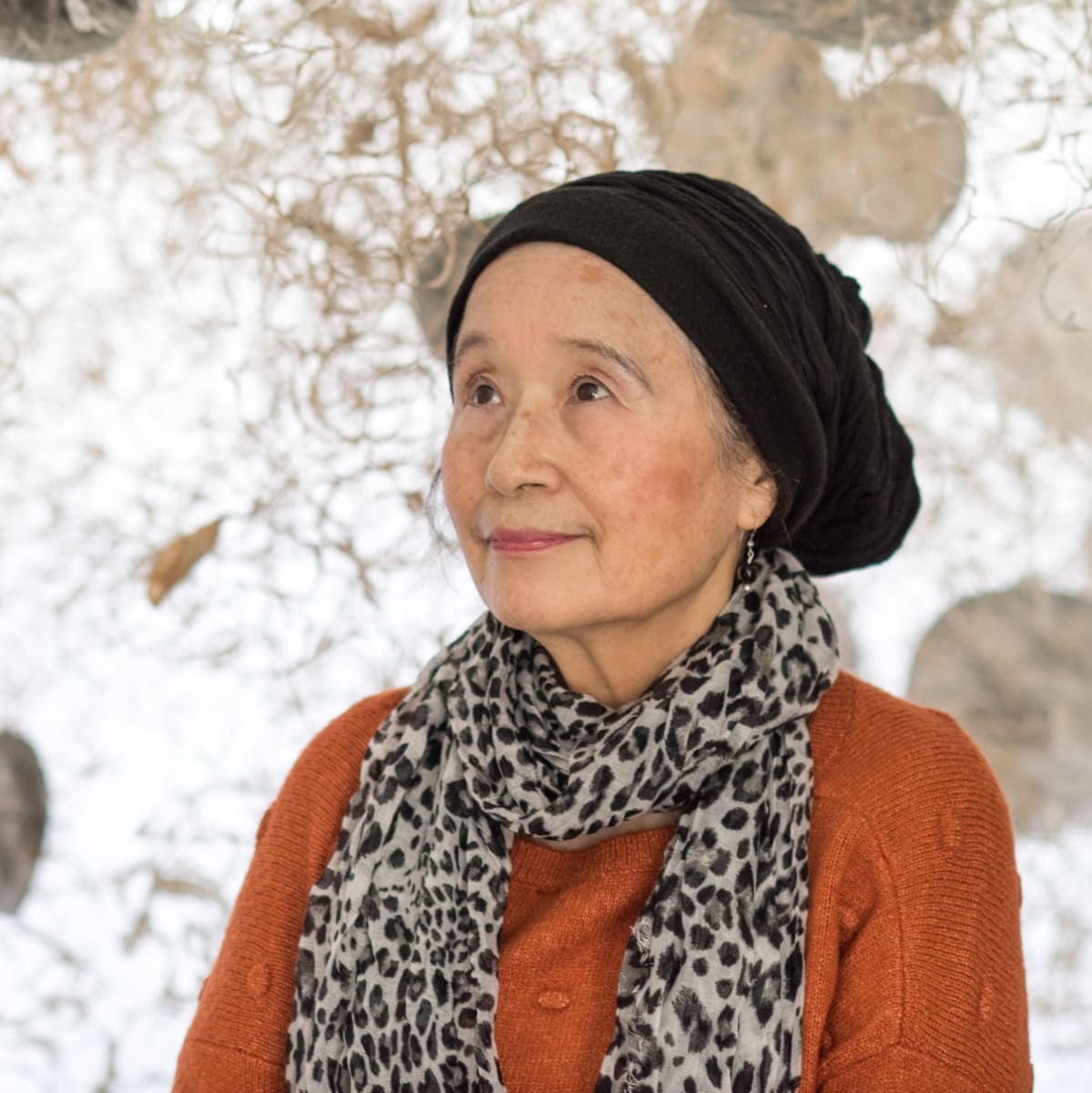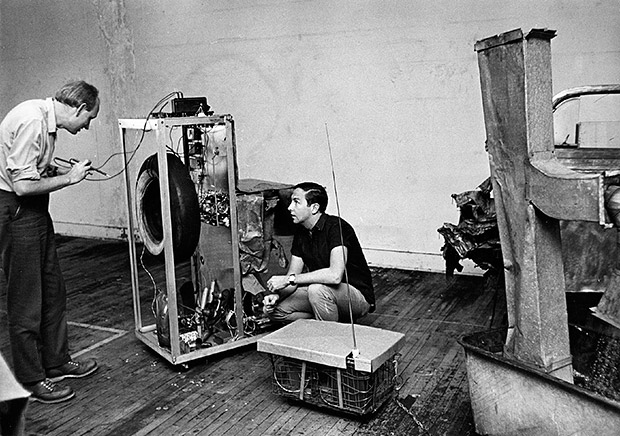Japanese Artist Yuriko Yamaguchi Makes the Trees Hum — Dreamy Sculptures Capture When Nature and Technology Meet
Intricate Works That Make Viewers Think
BY Ericka Schiche // 11.10.23An installation view of Yuriko Yamaguchi's solo exhibit "The Trees are Humming," currently on view at Barbara Davis Gallery through November 11, 2023. (Courtesy Barbara Davis Gallery)
A beautiful sight in artist Yuriko Yamaguchi’s hometown of Osaka, Japan is the array of golden-hued gingko trees lining Midōsuji Avenue. To many Osakans, the trees symbolize timeless natural grandeur and insinuate nascent autumnal vibes into the atmosphere.
Here in Houston, the Barbara Davis Gallery exhibit “Yuriko Yamaguchi: The Trees are Humming,” captures an inspiring, spectacular fusion of art, nature, science and technology. On display through this Saturday, November 11, Yamaguchi’s artworks bring autumn to mind while reinforcing interconnectedness between various elements. Her work is also displayed in the National Museum of Women in the Arts group exhibition “The Sky’s the Limit” in Washington, D.C. That runs through February 25.

Yamaguchi investigates many seemingly contradictory ideas: natural and artificial, positive space and negative space, diaphanous and opaque, the finite and infinity.
To achieve harmony between art, life and nature, she utilizes natural materials — kozo paper, abaca, flax paper pulp and hand spun silk. She learned to make gampi and kozo paper from a master papermaker in Nagano, Japan. In addition to these materials, Yamaguchi also incorporates hand-cast resin, brass or steel wire and LED lights. In the past, she has also worked extensively with wood and has created numerous large-scale installations.
“It’s important to incorporate natural with artificial materials and try to establish a sort of harmony as one,” Yamaguchi says. “I feel art and science are separate fields, but they are also very interconnected.”
Her intricately designed network of bioluminescent suspended sculptures and wall sculptures brings to mind a labyrinth. The 10 artworks displayed in Barbara Davis Gallery are also conceptually interconnected. Some artworks, like Core #2 and Core #3 (2023), resemble dark brown clusters of seeds or pods. Other works, like Infinite Growth (2009) and No End (2023), suggest infinity within nature.
Constructed using hand cast resin and brass wire, Web #8 (2007) is the most tree-like of the sculptures. And the three sculptures bearing the title Fall (2023) are ethereal and mystical. A sculpture entitled Womb #3 (2023) makes a timely, powerful statement which can be interpreted in many ways. All the artworks featured in the exhibit appear to be engaged in an intriguing conversation with each other.
The colors of autumn also prevail. Gold, translucent honey and shades of brown and orange. Together, the sculptures could also visually and metaphorically represent the ubiquitous but unseen “cloud” often mentioned in relation to computer technology.

The Power of Japanese Women Artists
The impact of Japanese women artists such as Yamaguchi on contemporary art is unequivocal. In the 1950s, Tsuruko Yamazaki and Atsuko Tanaka helped cement the legacy of the groundbreaking Gutai Art Association. Likewise, Japanese expats Mieko Shiomi and Shigeko Kubota made important contributions to the Fluxus movement, although Joseph Beuys remained the face of Fluxus. Additionally, both Yoko Ono and Yayoi Kusama have made early and lasting groundbreaking contributions to contemporary art.
Before emigrating to the United States while in her early twenties in 1971, Yamaguchi met a group of artists and engineers during the 1970 Osaka World Expo. At the expo, she worked at the Pepsi Pavilion, which was created by a group of artists known as Experiments in Art and Technology.
The futuristic E.A.T. organization, established in 1966, fused technology with visual arts. Founding members included electrical engineers Billy Klüver and Fred Waldhauer, and artists Robert Rauschenberg and Robert Whitman. The E.A.T. collective utilized cutting edge technologies to create art — video projection, wireless sound transmission and Doppler sonar.
“I was able to make a connection with them, and that really stimulated me, seriously, to be an artist,” Yamaguchi notes.

In addition to the E.A.T. group, she also cites Fritjof Capra’s The Web of Life book and architect Antoni Gaudi’s work as inspirations. She became enamored with Gaudi’s biomimetic architectural designs and philosophies and went on to complete a residency in Barcelona in 2017.
“Gaudi was very influential to me,” Yamaguchi says. “Although he was an architect, he was interested in organic things. He collected a lot of natural materials. Nature is a part of his inspiration.”
On a more spiritual level, Yamaguchi is inspired by the temples at Mount Hiei and Mount Kojin that her grandparents took her to visit in Japan. They practiced Shinto and encouraged her to incorporate this belief system into her life.
“In Shintoism, there is no worshipping of icons,” Yamaguchi says. “They worship nature, like the sky or air. Anything about nature is the subject matter to worship.”
But most of all, she is inspired by the intersection of nature and technology.
“Making art is connecting with nature,” Yamaguchi says. “I realized we will never be able to live without using any artificial materials or gadgets, computers, or any technology. So we really are depending on artificial everything . . . because we are probably unable to escape.”
“Yuriko Yamaguchi: The Trees are Humming” is on view at Barbara Davis Gallery, 4411 Montrose Boulevard, through Saturday, November 11. Learn more here. Yamaguchi’s work also appears in the National Museum of Women in the Arts group exhibition “The Sky’s the Limit” through February 25 in Washington, D.C. Learn more about that here.

























































